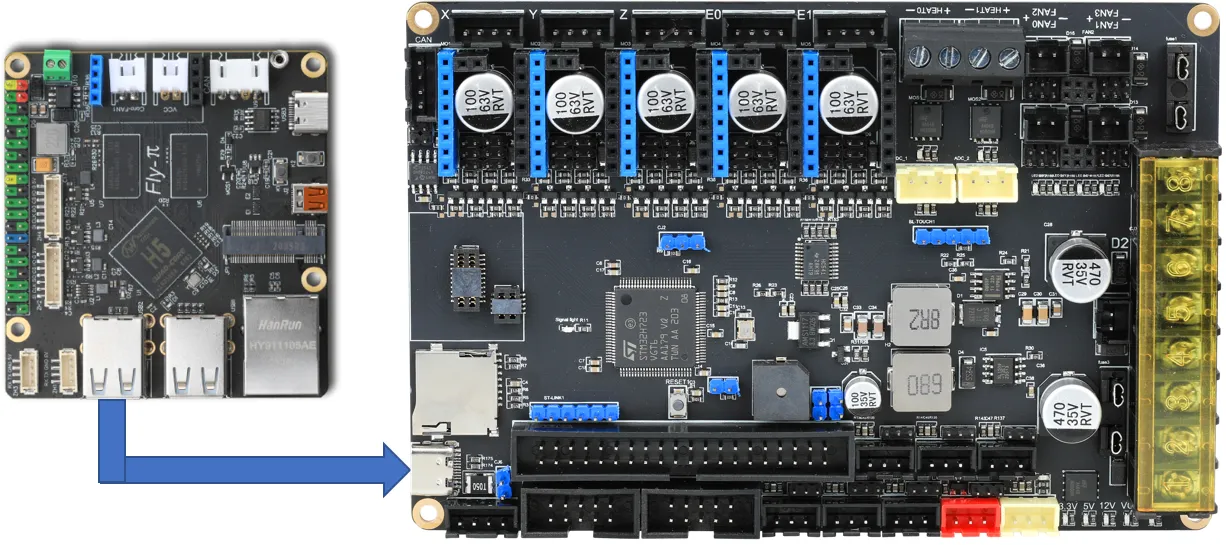Main Board Wiring
Interface Diagram
Interface Description
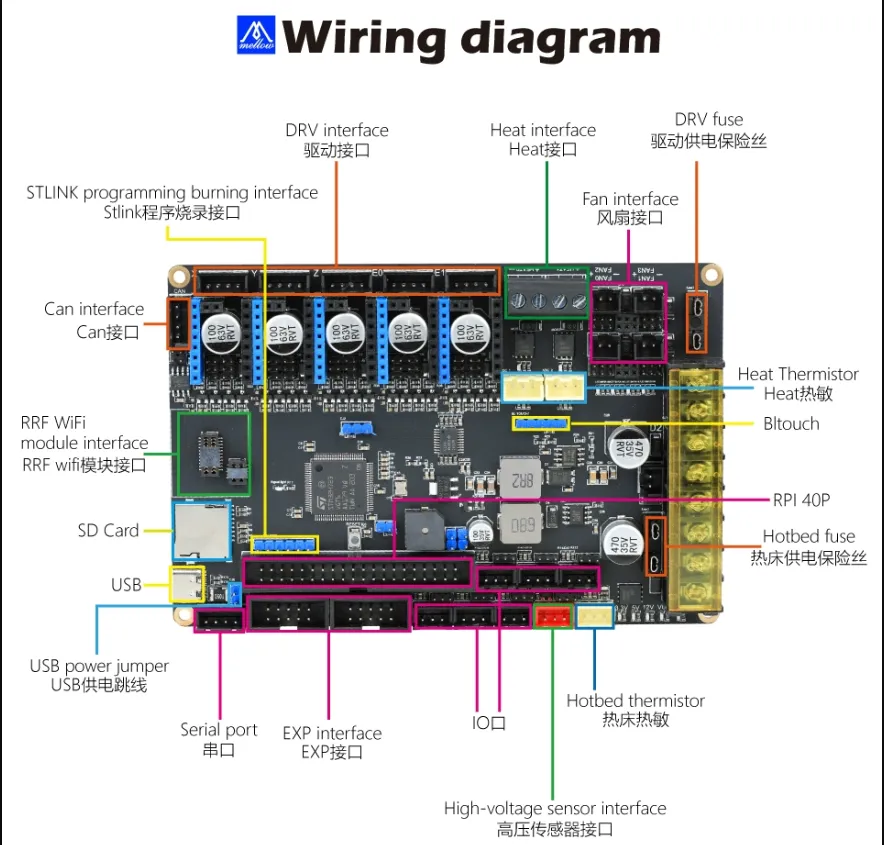
Pin Description

Power Wiring
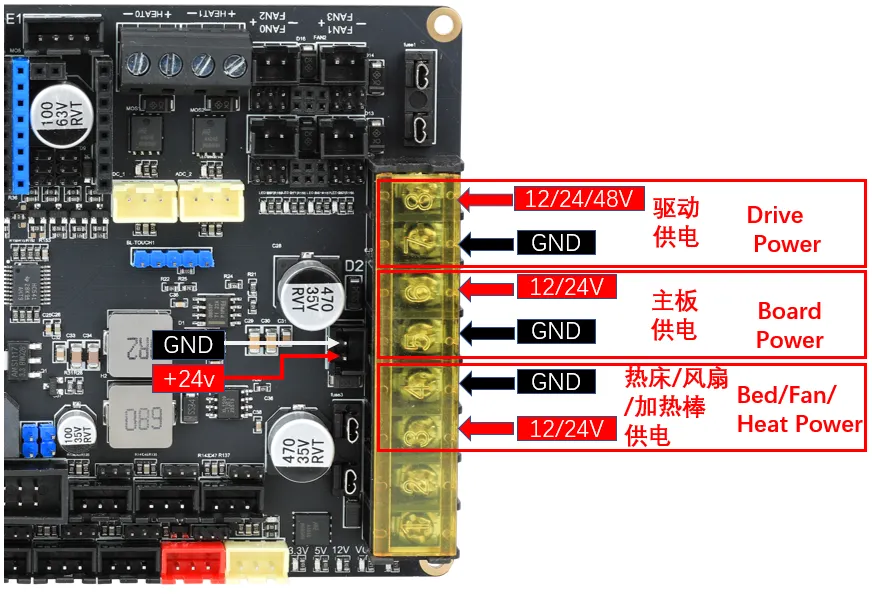
- Fuse Installation
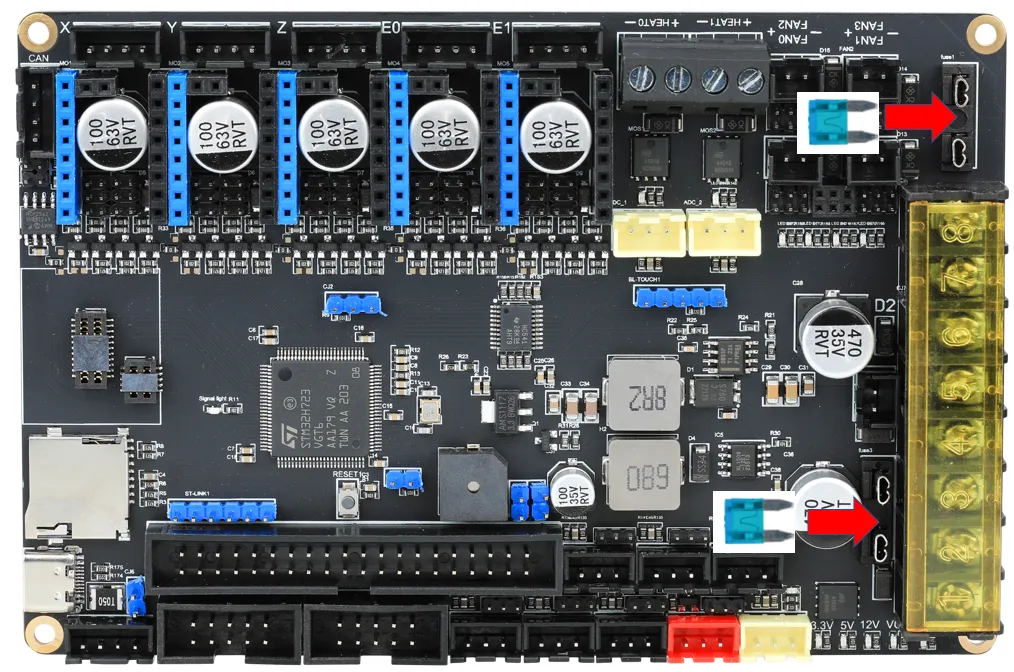
Driver Installation
Motherboard Driver Jumper

Driver Installation
-
Before installing the driver, corresponding checks need to be performed to avoid damaging the driver or motherboard.
-
FLY Driver: If the infinite position reset function is not used, set the DIP switch to position 1; conversely, if the infinite position reset function is used, set the DIP switch to ON.
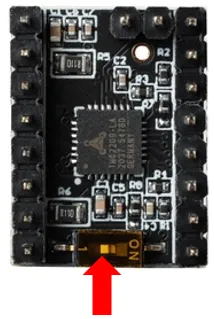 dangerous
dangerous- Attention!!! When installing the driver module, make sure the direction is correct, i.e., EN pin on the upper left corner, otherwise it may damage the driver or even the motherboard!!! Make sure to attach a heatsink to the driver!!!
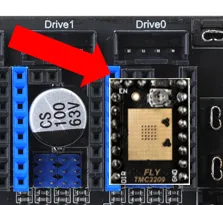
Stepper Motor Wiring
- Regardless of which manufacturer produces the two-phase stepper motor, its final appearance corresponds to 4 wires. Regardless of color, black, white, green, yellow, etc., they correspond to 4 wires. Therefore, we need to group the wires into A and B groups.
- For two-phase four-wire stepper motors, there is no need to know which is the A group and which is the B group; mainly determine one group, and adjust the motor direction in the configuration.
-
The most commonly used stepper motor in 3D printers is the two-phase four-wire stepper motor, and its principle is shown in the figure below. There are two methods to identify the wire sequence of the stepper motor:
- Connect any two phase wires, and if significant resistance is felt when manually turning the motor shaft, then these two wires are a pair. Conversely, they are not a pair, and other phase wires need to be tested.
- Use a multimeter set to continuity mode to test any two phase wires of the stepper motor. If they are connected, they are a pair; conversely, they are not a pair, and other phase wires need to be tested.
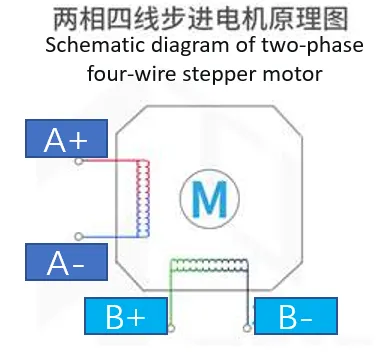
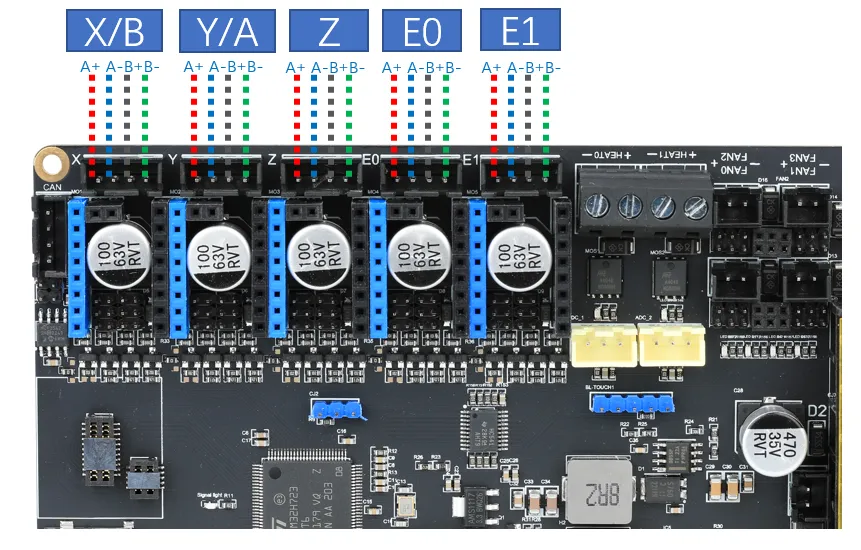
Heater Wiring

Bed Wiring
-
AC Bed: When wiring the solid-state relay, please pay attention to connecting the input and output correctly.
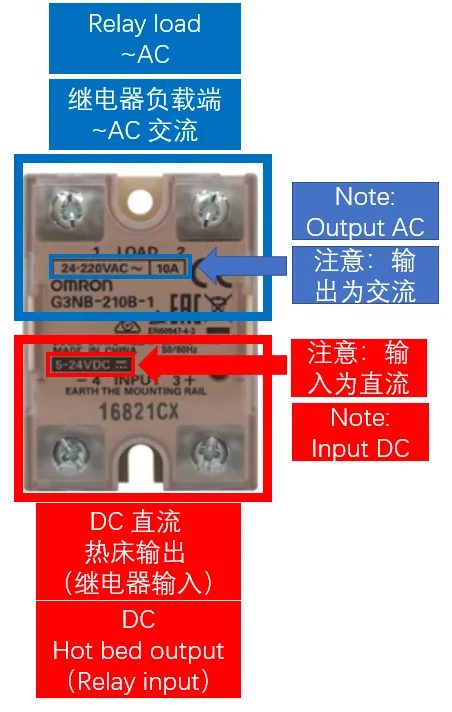
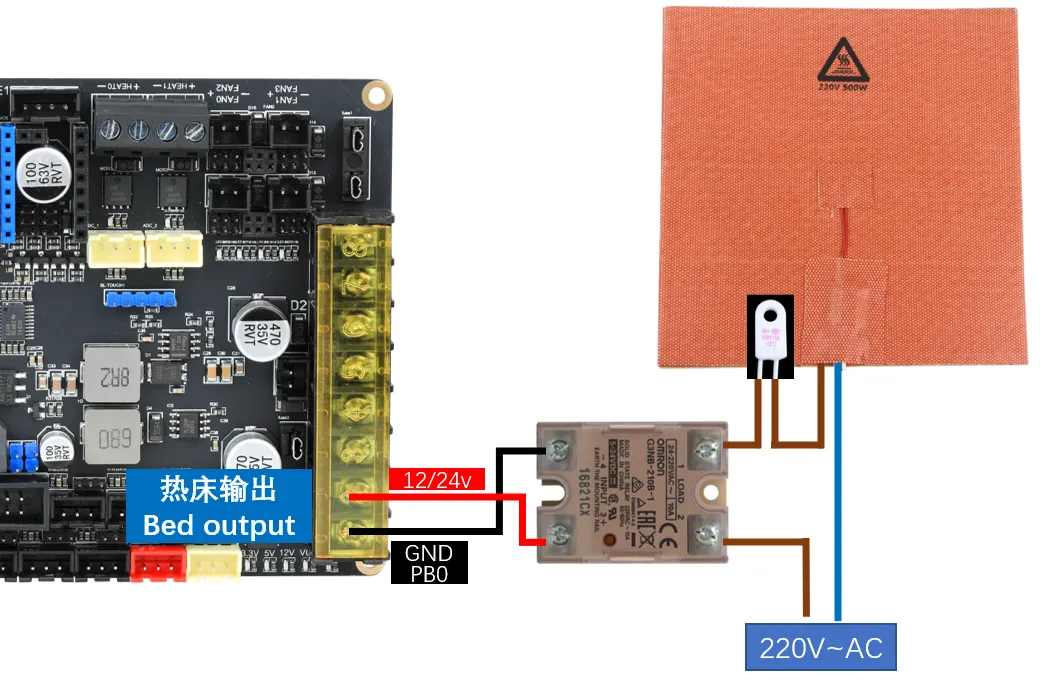
-
DC Bed: When connecting the bed to the onboard MOS, please note the power usage. The maximum current for the DC bed cannot exceed 10A. If it exceeds 10A, it is recommended to use an external MOS module for the bed to avoid irreversible damage to the motherboard.
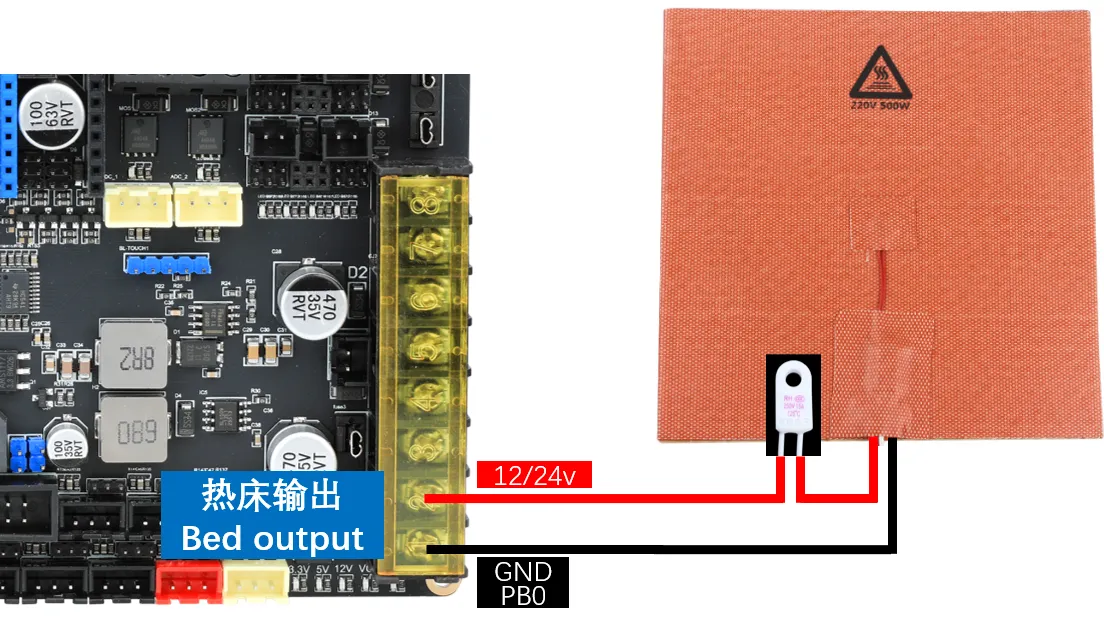
Thermistor Wiring
Thermistor Type Introduction
-
The wiring method for the thermistor is as follows. Please consult the purchasing merchant for the type of thermistor.
-
If purchased from FLY (as shown in the following figure), configure sensor_type as: ATC Semitec 104GT-2
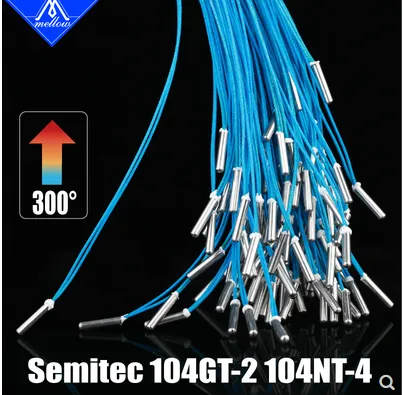
-
If using conventional NTC 100K (as shown in the following figure), configure sensor_type as: Generic 3950

Mainboard Thermistor Wiring
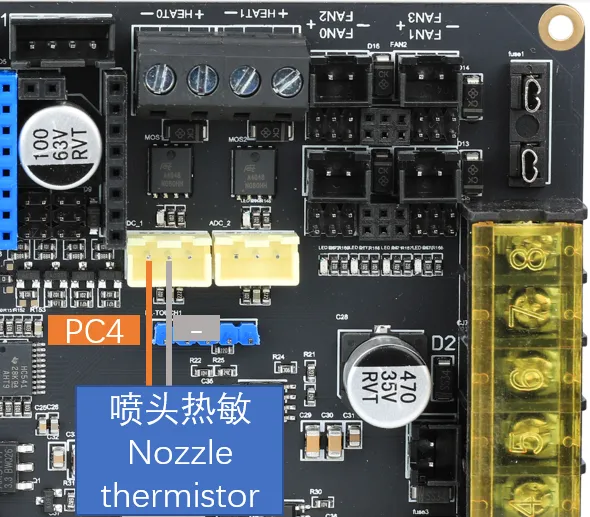
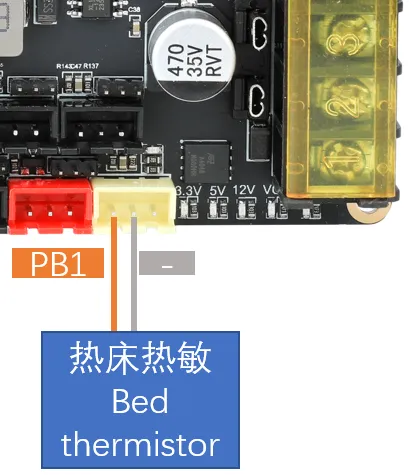
Fan Wiring
-
Fan Wiring
tipVoltage selection for fans. Simply short the corresponding voltage jumper to the header pin, as shown in the figure below. Note: The jumper configurations in the yellow box are all the same. Attention!!! Choosing the wrong fan voltage may damage the fan or the MOS module.
- Installation of the MOS module (no polarity). As shown in the figure below

- Fan Wiring
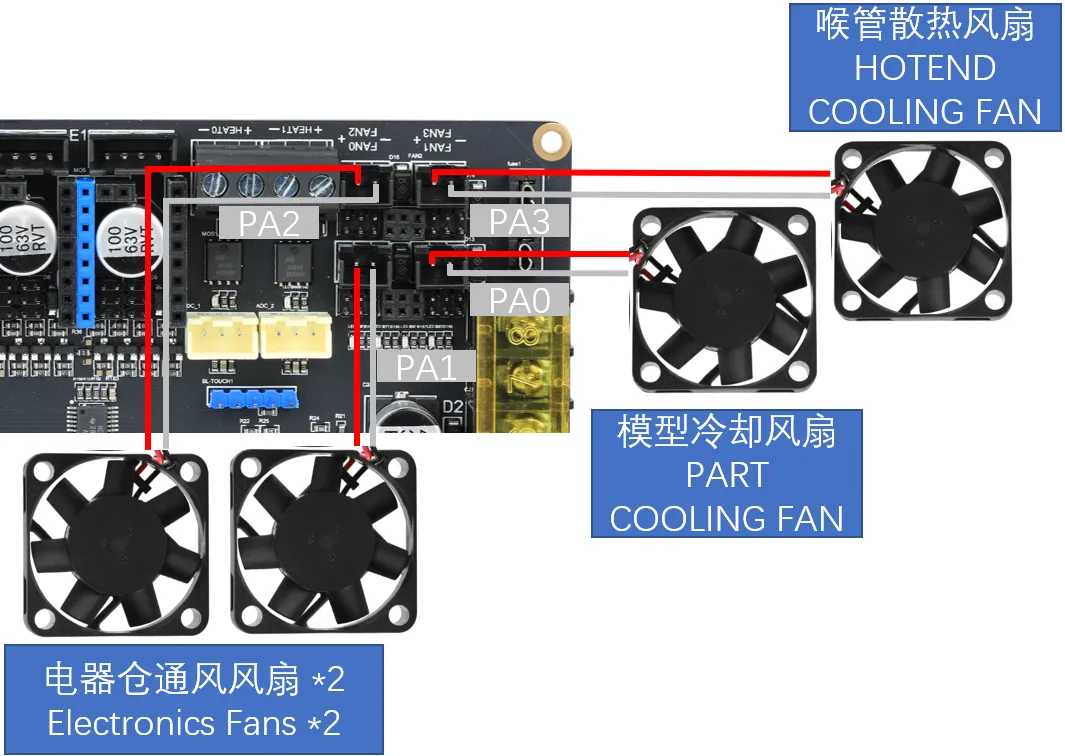
Limit Switch Wiring
- Limit switches have two types: Normally Open (NO) and Normally Closed (NC). In general, it is recommended to use Normally Closed (NC) in 3D printers. This way, if there is a problem with the limit switch circuit, the system will promptly report an error, avoiding unnecessary collisions and printer damage.
The limit voltage of Super8 can be changed by modifying the shunt resistor, with options of 3.3V, 5V, and 12V. The default is 5V, which can meet most usage scenarios. No modification is required unless necessary. If modification is needed, proceed with caution.

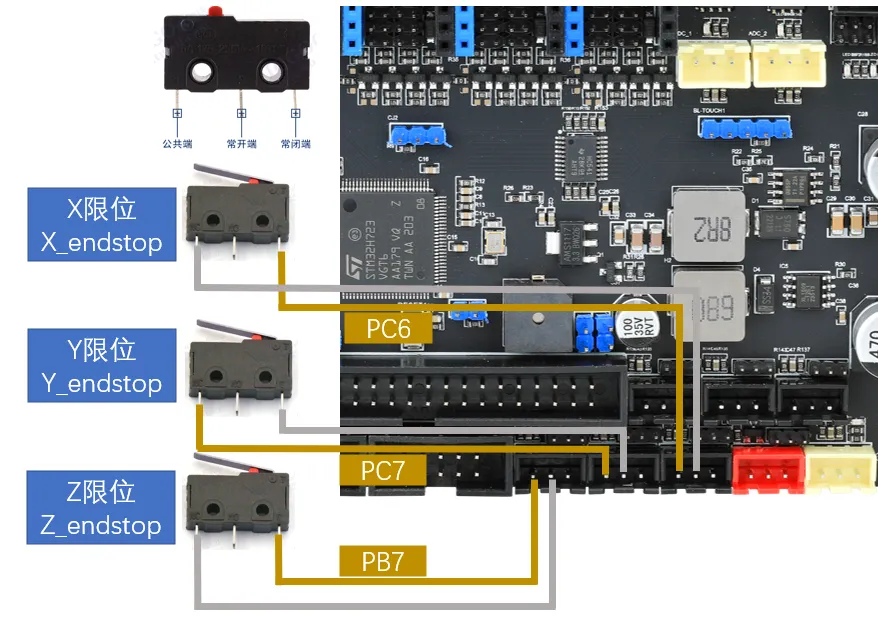
Bed Leveling Sensor Wiring
Metal Proximity Switch Wiring
-
VORON officially recommends using the Omron TL-Q5MC proximity sensor (previously recommended PL08N, both have the same principle but different detection distances) for bed leveling. The wiring method is as shown below.
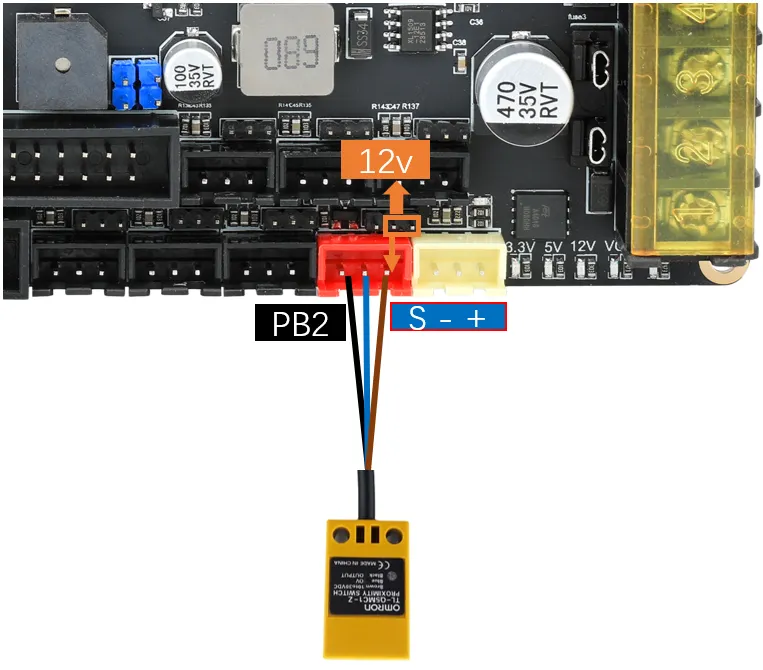
BL-Touch Wiring
-
BL-Touch has five wires, three in the first group responsible for powering the sensor and controlling the probe's retraction, and the second group consists of ground and signal lines for outputting limit signals. Carefully check the wiring sequence when connecting BL-Touch, as incorrect wiring may permanently damage the sensor and motherboard!!! The wiring method is as shown below.
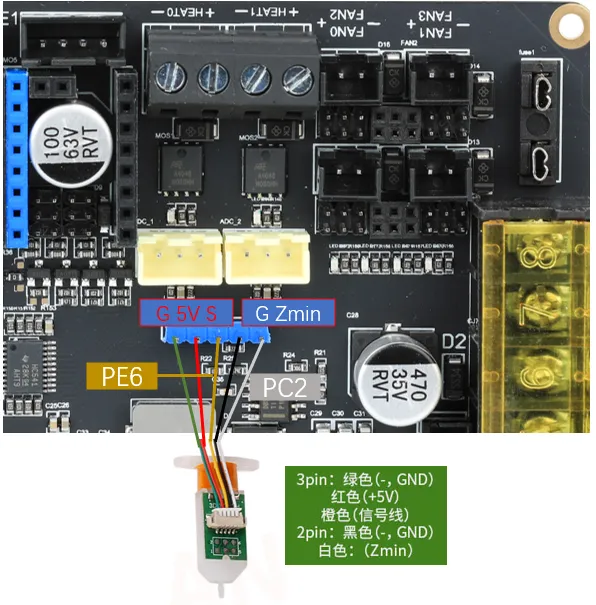
Klicky Wiring
-
Klicky is a third-party leveling sensor that can be easily made at home with low cost and stable performance, making it highly recommended. The wiring method is as shown below.
-
Project Address: jlas1/Klicky-Probe
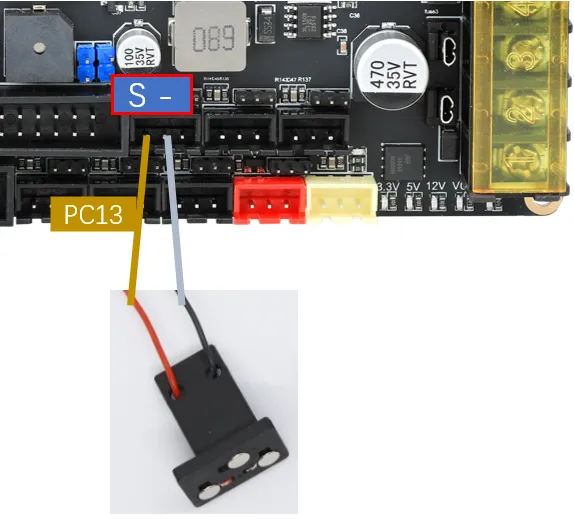
Voron Tap Wiring
-
Tap is a nozzle-based Z-probe suitable for V2 and Trident printer designs. The entire toolhead moves to trigger the optical switch, providing better precision than regular limit switches and can be used with almost all print platforms.
warningVoron Tap is not recommended to connect to 24V, as some versions may cause the Tap sensor to burn out due to 24V, which is not a problem with the Fly product but a design flaw in Voron Tap. Please be aware!!!
dangerousAttention: 5V and GND must not be reversed, otherwise the Tap sensor or even the motherboard may be damaged!!!
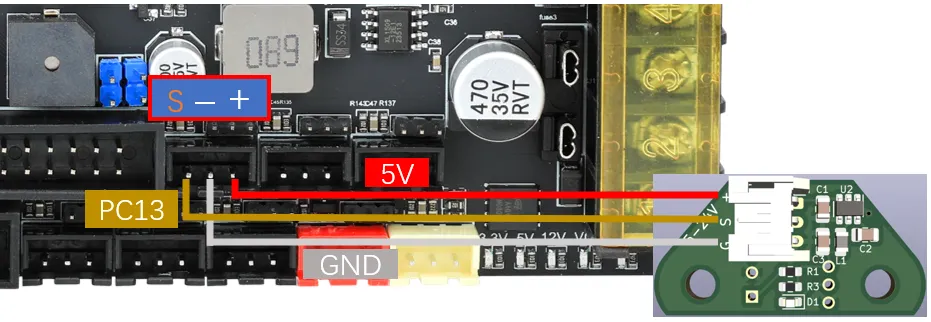
FLY-Mini12864 LCD Wiring
-
The following diagram shows the wiring method for the FLY mini12864. For screens from other manufacturers, please consult the respective manufacturer. Reversing or incorrectly connecting the Mini12864 screen may prevent the host computer from connecting to the MCU. If the host computer could previously connect to the motherboard's MCU but cannot after using the Mini12864, try removing the Mini12864 wiring!!!
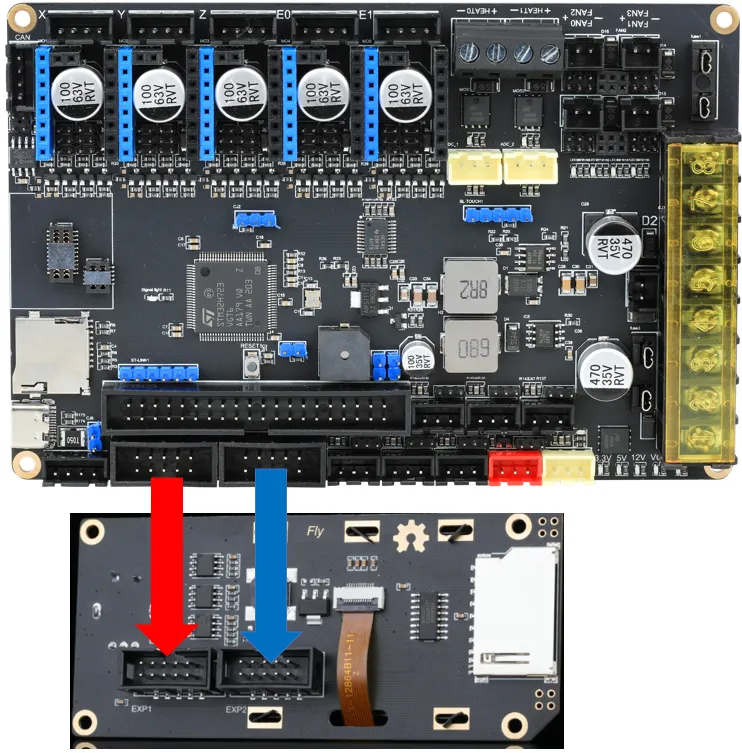
Connecting to Host Computer
-
The motherboard connects to the host computer via the Type-C interface or through the serial port. Only the former is introduced here.
